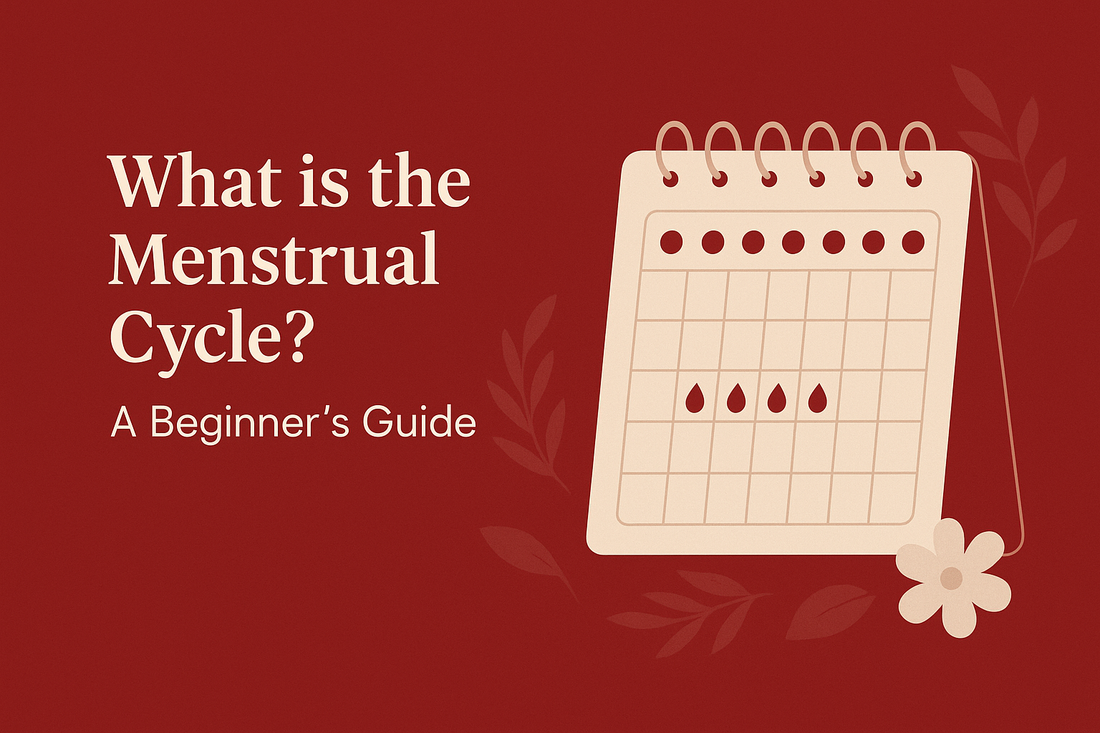What is the Menstrual Cycle?

What is the Menstrual Cycle? A Beginner’s Guide
What is the menstrual cycle? It’s one of the most natural rhythms of life, yet for many women it can still feel confusing or overwhelming. The menstrual cycle is your body’s monthly process of preparation, renewal, and possibility — and understanding it can help you feel more in tune with yourself.
At SheCycles, we believe knowledge is power. So let’s break it down together — clearly, gently, and in a way that makes sense.
How Long Is a Typical Menstrual Cycle?
The average menstrual cycle lasts about 28 days, but it’s completely normal for it to be anywhere between 21–35 days. Your period — the days of bleeding — usually lasts 3–7 days.
Think of the cycle like a repeating story your body tells each month. Even if your days shift a little earlier or later, you’re still following the same rhythm.
➡️ Curious about period timing? Check out our guide on Why Is My Period Late?
The 4 Phases of the Menstrual Cycle
Your cycle isn’t just “your period.” It’s actually made up of four unique phases — each with its own purpose and changes in how you feel.

1. Menstrual Phase (Day 1–7)
This is when bleeding occurs. Your body is shedding the uterine lining from the last cycle. It’s common to feel tired or emotional — be gentle with yourself during this time.
2. Follicular Phase (Day 1–13)
This phase overlaps with menstruation and continues afterward. Follicles in the ovaries begin to mature, preparing an egg. Energy often begins to rise here.
3. Ovulation (Around Day 14)
The mature egg is released. This is your most fertile time, and many women notice higher energy, confidence, or even a natural glow.
4. Luteal Phase (Day 15–28)
If the egg isn’t fertilized, hormone levels shift and the body prepares for menstruation. PMS symptoms like mood changes, bloating, or food cravings can show up here.
➡️ Want to dive deeper? Read How You Feel at Different Stages of the Menstrual Cycle
What’s Going On in Your Body (Hormones & Cycles)
Behind the scenes, hormones like estrogen, progesterone, LH, and FSH guide the cycle. They tell your ovaries when to release an egg, your uterus when to build a lining, and your body when it’s time to reset.
Understanding these signals helps you see why your moods, energy, and body can feel so different at each stage.

When to Expect Variation & What’s Still Normal
Every woman’s cycle is unique. Some months are shorter, some longer. Stress, travel, illness, and lifestyle changes can all impact your rhythm.
It’s normal for cycles to vary, especially during teenage years or perimenopause. But if your cycle is consistently very irregular, extremely painful, or heavy, it’s a good idea to speak with a doctor.
Steps: Cycle Tracking & Self Care
The best way to understand your body is to track your cycle. Apps, journals, or even simple calendars can help you notice patterns — from moods to cramps to cravings.
Pairing this awareness with supportive care, like choosing the right period products, makes a big difference. Many women love the freedom of a Reusable Menstrual Cup -
eco-friendly, comfortable, and cost-effective.
➡️ Explore more cycle care in these posts:
- Why Do Periods Hurt?
- Foods That Help With Period Cramps
- What Is a Period?
Conclusion
The menstrual cycle is more than just a period — it’s a monthly rhythm of change, growth, and renewal. By understanding the 4 phases and how your body responds, you can feel more connected, empowered, and at ease with yourself.
And now you know what is the menstrual cycle — not as a mystery, but as a natural and beautiful part of being a woman.
